America’s stock in the world has depreciated considerably since the start of the millennium. The reasons will be agreed upon only in hindsight, but the national post-9/11 paranoia that spawned a series of criminal military interventions overseas and calls for “securitizing” democracy worldwide could not have helped. Nor could the election of Donald Trump to the presidency of the reigning global superpower, his “America First” rhetoric, and his jettisoning of the country’s commitments to the Paris climate agreement. But all the while, the construction of new U.S. embassy projects continued at an unheard-of pace—a total of 167 new diplomatic facilities since 1999.
The vast majority of these buildings replaced aging embassies through the Capital Security Construction Program, which was implemented following the 1998 embassy bombings in Nairobi and Dar es Salaam and which determined that 180 out of 260 diplomatic posts worldwide needed to be updated. Overseen by the State Department’s Bureau of Overseas Buildings Operations (OBO) since 2001 (and before that by its predecessor, the Foreign Building Office), the program has enlisted the services of notable American architecture firms in cities across the world, including Studio Gang (Brasília) and Morphosis (Beirut) to KieranTimberlake (London) and Weiss/Manfredi (New Delhi).
With so many projects coming online, these new diplomatic facilities offer a useful lens for reading the psychological and ideological currents operative in the U.S. today. Through built form, they point up the values underlying the country’s self-presentation and reveal where these same values come into contradiction. For the architects of these projects, the challenge lies in representing American values while implementing increasingly technocratic and high-security design regulations. The dilemma is perhaps most clearly posed in KieranTimberlake’s description for its London embassy, which opened in late 2017: “How can we build an embassy that reflects the core values of democracy—transparency, openness, and equality—and is welcoming, secure, and highly sustainable?”
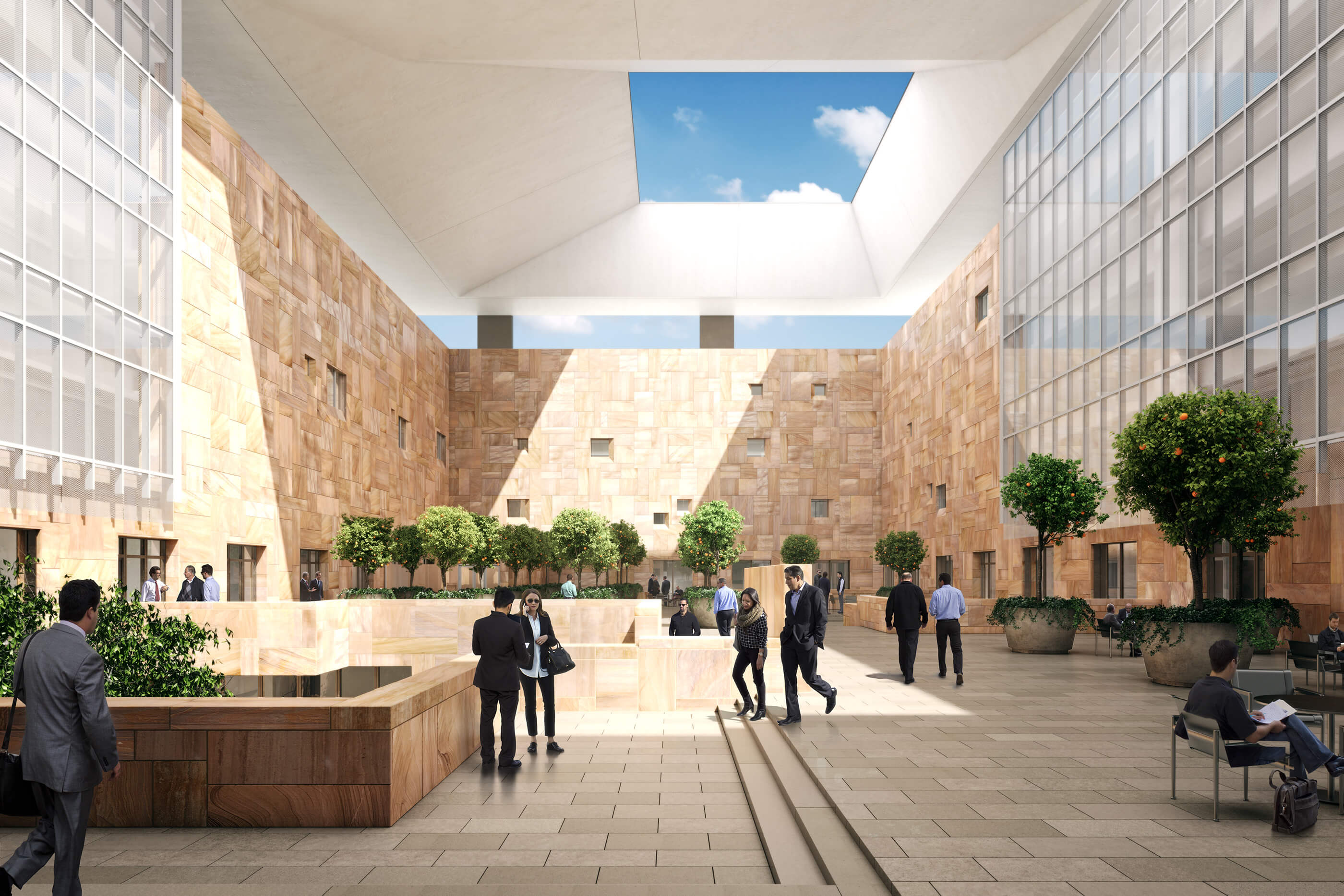
The current building boom follows a long process of debate and adjustments in methodology as America experimented with its image abroad, with varying degrees of confidence. The purchase of land for the construction of chanceries (the technical designation for embassy buildings, with the metonymic “embassy” referring to the group of people who conduct diplomacy) was authorized by Congress only in 1911. American diplomatic buildings opened gradually, often occupying ready-made domestic structures; it was only after WWII and the initiation of the Cold War that high-modernist structures by architects including Gordon Bunshaft, Harry Weese, Walter Gropius, and Edward Durell Stone began to proliferate in opposition to Soviet socialist realism. But just as quickly, embassy construction slowed to a crawl, even after the 1979 occupations of embassies in Tehran and Islamabad. It would take a series of terrorist acts to kick embassy design back into high gear. The 1983 bombing of the American embassy in Beirut led to new scrutiny of security, a focus redoubled in the aftermath of the twin embassy bombings in Kenya and Tanzania in 1998.
The ensuing Capital Security Construction Program implemented stringent requirements for newly constructed diplomatic buildings while also setting forth OBO’s ambitious construction schedule. The latter agency introduced Standard Embassy Design for the post-9/11 era with the 2001 Kampala, Uganda, embassy, a formula for the production of buildings that tightly adhered to security guidelines while also optimized for cost and lead times. This formula quickly began to appear around the world in the early 2000s, producing boxy, defensive structures, alienated from their surrounding contexts and usually perched inaccessibly far from city centers. This antisocial approach came under increasing criticism from the Obama administration. A 2010 CNN.com op-ed penned by then-senator John Kerry and former senator William Cohen made these points clear. “Unique architectural wonders built to last were replaced by a standardized ‘embassy in a box,’” they wrote. “They are uniform in appearance and quickly assembled fortresses designed to meet security specifications in one of four sizes—small, medium, large and extra-large, epitomized by our supersized embassy in Baghdad.” Aside from the symbolism, the standard design often implemented ventilation systems inadequate for particular climates and rote building massings sitting at odds with topography on certain sites. They alienated allies and traveling U.S. tourists alike.
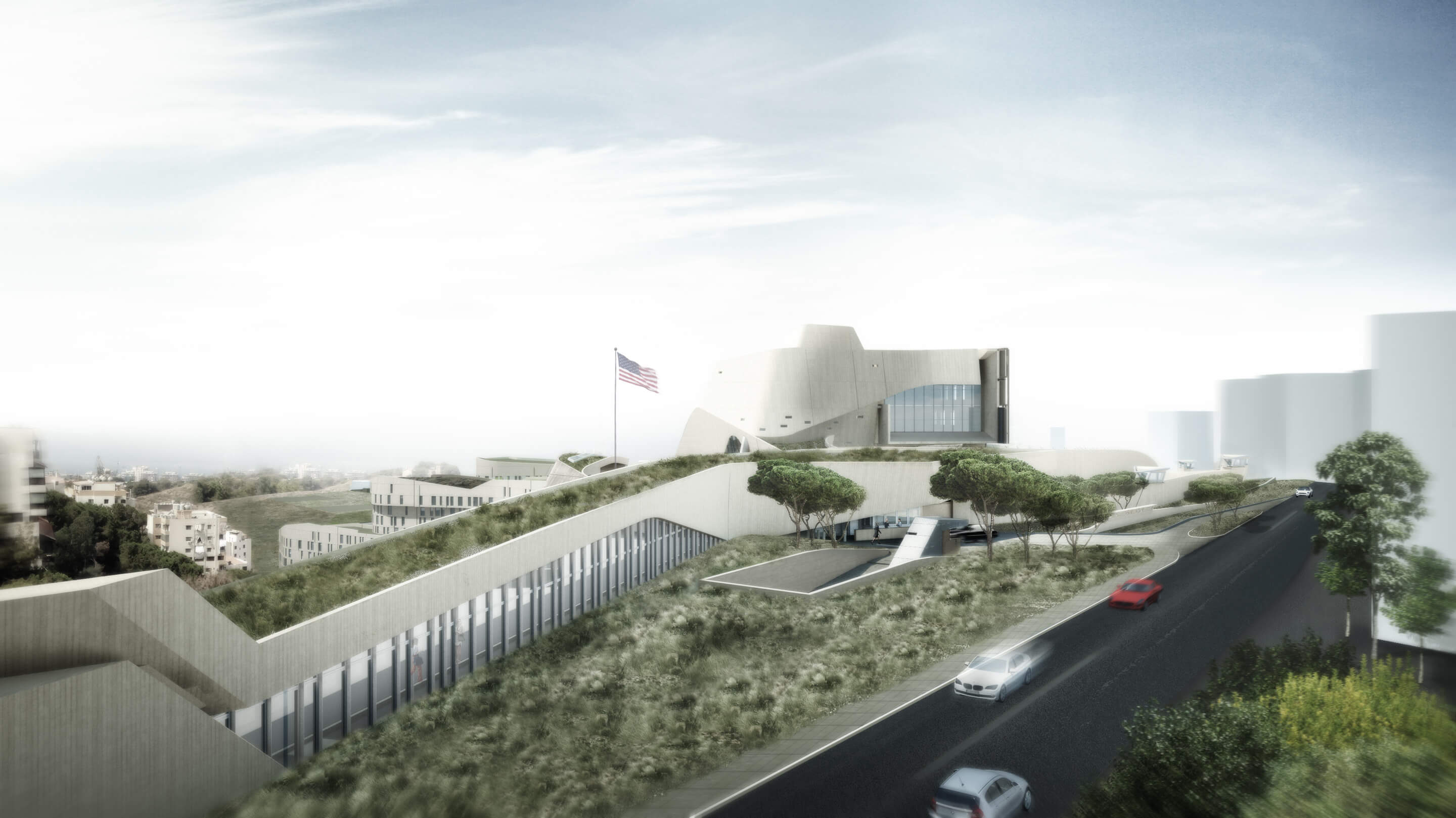
Kerry authored the 2010 Embassy Design and Security Act and later, as secretary of state, succeeded in steering OBO away from standardized design altogether. OBO had already adopted the Excellence in Diplomatic Facilities Initiative, based in part on a 2009 AIA report, but the Kerry legislation placed welcoming exteriors and public spaces within facilities on par with stringent security requirements. It also opened embassy commissions to a wider array of architecture firms, such as Tod Williams Billie Tsien Architects, whose 2013 project for the U.S. embassy in Mexico City, as a joint venture with Davis Brody Bond (and now under construction), inaugurated the new program.
The definition of the “excellence” promised by the new legislation is not immediately apparent, though the bureau’s self-description offers some hints. According to its website, “OBO provides safe, secure, functional, and resilient facilities that represent the U.S. government to the host nation and support the Department’s achievement of U.S. foreign policy objectives abroad.” Moreover, these self-same facilities “represent American values and the best in American architecture, design, engineering, technology, sustainability, art, culture, and construction execution.” Beyond pragmatic concerns (security, sustainability, and construction execution), there is an aspiration to operate on the symbolic register—to “represent American values”—and, indeed, this was the impetus behind the move away from standard designs. According to OBO director of external affairs Christine Foushee, the agency “evaluates each diplomatic design on the success of its security, functionality, resiliency, and spatial flexibility”—on the side of functionality—“while representing dignity, stability, innovation and openness.” But it is difficult to find the link to physical implementation of these abstract concepts in OBO’s documents or in project descriptions written by the commissioned architecture firms.
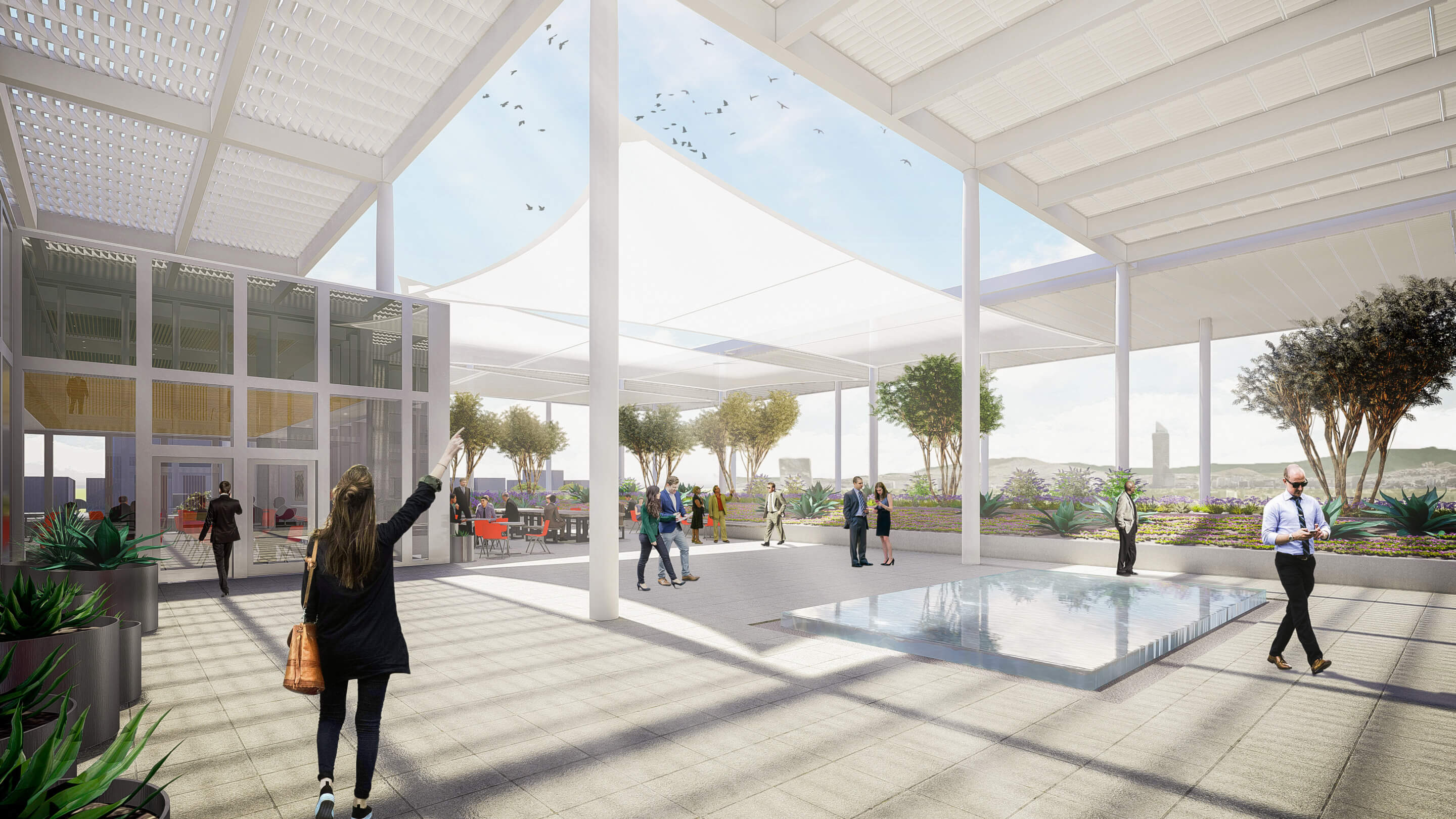
For midcentury architects the equation was straightforward. As historian Jane C. Loeffler writes in her essay “Embassy Architecture as Politics and Symbol,” Bunshaft and other modernists used “the transparency of the International Style as a metaphor for the openness of America’s political system,” which was “a stark contrast to the ponderous classicism of typical Soviet structures.” Frank Lloyd Wright in assessing Edward Durell Stone’s chancery building in New Delhi—a breezy colonnade backed by a light stone screen—noted that it was the “only embassy that does credit to the United States.” This direct translation between the literal transparency of glass and screens on the one hand and the metaphorical transparency of a democratic system on the other has only been strengthened in the years following the collapse of the Soviet Union, with buildings like Norman Foster’s Reichstag making an explicit link between the two and the high-tech glass and steel of contemporary finance headquarters linking transparency to the liberal flows of globalized capital, free to land where investment opportunities beckon. But in recent embassy buildings—with notable exceptions such as KieranTimberlake’s London embassy and SHoP’s effort in Tegucigalpa, Honduras—this metaphorical association is noticeably downplayed. Rather, the values advertised are of a more pragmatic nature: sustainability and respect for vernacular styles and local cultures.
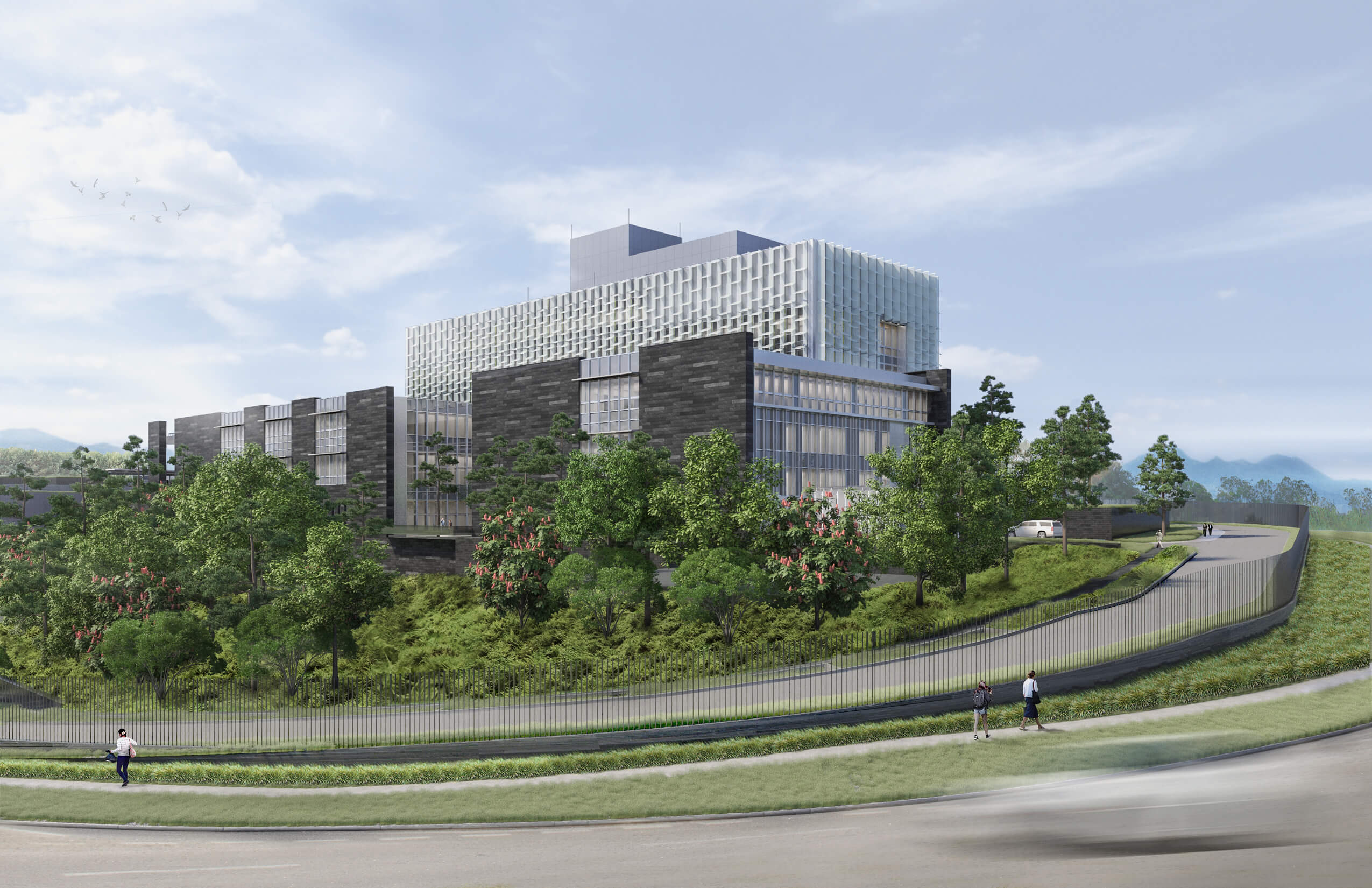
For many of the firms involved, the building traditions of a given context, as well as the material culture it has historically sustained, offer creative stimulus. “Cues are taken from endemic regional forms and materials like sand, concrete, and red metal oxide primer; a series of screens and canopies evocative of traditionally used acacia limbs shield buildings from the intense West African sun,” said Miller Hull partner Sian Roberts in a prepared statement about the new embassy in Niamey, Niger. Roberts would go on to remark that the firm’s embassy work (Miller Hull is also developing a facility in Guatemala City) forms “a clear representation of the United States and our values,” but these are difficult to make out in the designs themselves. This pattern carries over to Moore Ruble Yudell’s chancery in The Hague, which was relocated in 2019 from an iconic Marcel Breuer building downtown to the city outskirts. “The buildings, while American in character, reflect sensibilities that are Dutch,” reads the project statement, somewhat ambiguously. “The most important aspect of this is the use of brick for the building facades, which is prolifically used as a facade material in the Netherlands.” However, both projects use transparency as a subtle but successful part of a visual and metaphorical repertoire: in Niamey, a sensuous and lush glazed brick wall crosses from exterior to interior, while at The Hague framing plays with phenomenal transparency in ways that would satisfy American postmodernists as well as De Stijl painters.
But as embassies grow larger, their designers have expanded their vision to include geographical formations and clusters of landscapes. Somewhat improbably, these supra-architectural features have become go-to justifications for design decisions. Parts of Ennead’s new Ankara, Turkey, embassy are “inspired by the Oak-Juniper-Black Pine forests of central Anatolia”; SOM’s Beijing campus layout takes inspiration from Suzhou gardens; and SHoP’s Tegucigalpa embassy gestures at “the mountainous local landscape.” Operating at the opposite end of the scale, embassy and consulate projects in Casablanca, Hyderabad, and Delhi draw on local textile arts to inform individual building components like screens and shades. Generally speaking, the invocation of vernacular is more than just rhetorical, as it offers concrete benefits. Locally cultivated materials and methods cost less, are easier for workers to install, and, per the description of Moore Ruble Yudell’s building in N’Djamena, Chad, “provide economic approaches to construction” in rural contexts.
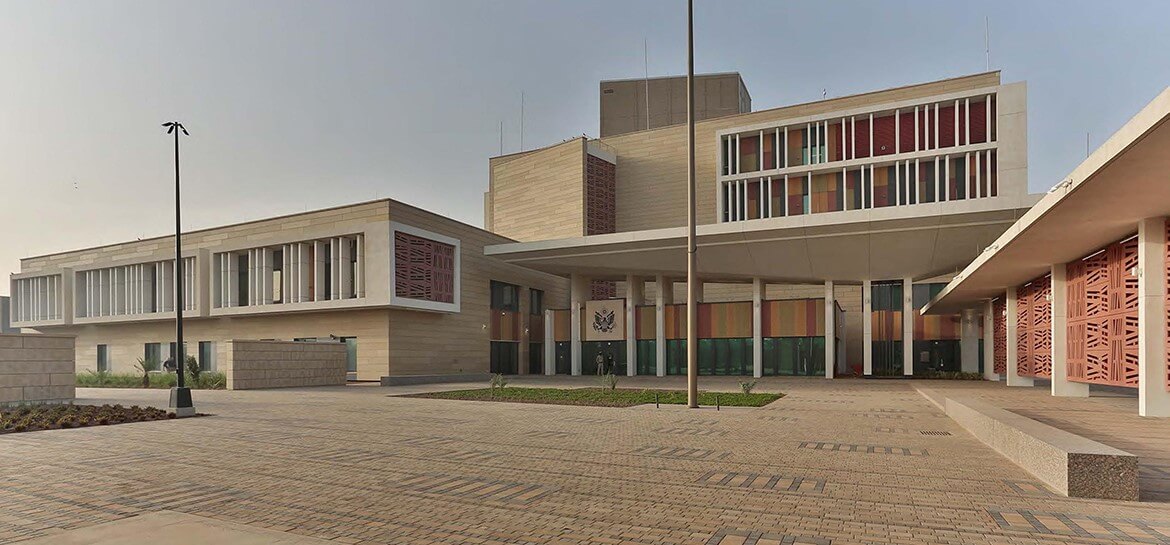
Similarly, sustainability—a major theme of OBO’s briefs in the Obama era and beyond—plays a double role. This aspirational green diplomacy is defined in OBO’s governing documents like the Foreign Affairs Manual and appears in almost every description of a new embassy building, the outcome of a series of regulations and project metrics. Said Foushee, “A LEED Silver certification achieves most of these requirements and is standard on OBO’s major capital projects.” But here again, what appears to be a technocratic imperative to tackle climate change actually covers for a very practical concern. In N’Djamena, Niamey, and Guadalajara (in yet another design by Miller Hull), solar power along with on-site wastewater treatment provides chanceries with the ability to go off the grid in times of danger or scarcity. Designs for locales as disparate as Lagos, Nogales (both Ennead), and Pristina (Davis Brody Bond) integrate rainwater harvesting systems, with the latter achieving “net-zero water.”
This blurring of aspirational and hard, pragmatic language would seem to suggest subterfuge. Yet the primacy of security concerns to OBO’s conception of these projects is extremely overt across multiple aspects of design, many of which seem to be holdouts from a turn-of-the-millennium era of embassy design. Most of the new buildings have been sited on sprawling campuses on the outskirts of cities: this remove from city centers provides necessary space for off-the-grid utilities and blast-attenuating buffer zones and also aims to prevent crowding surrounding neighborhoods with visitor traffic. Some of the new buildings anchor fledgling municipalities and newfangled districts, as in Casablanca (Miller Hull) and Beijing (SOM), resulting in American-style suburban development and the unsustainable transit patterns that accompany it.
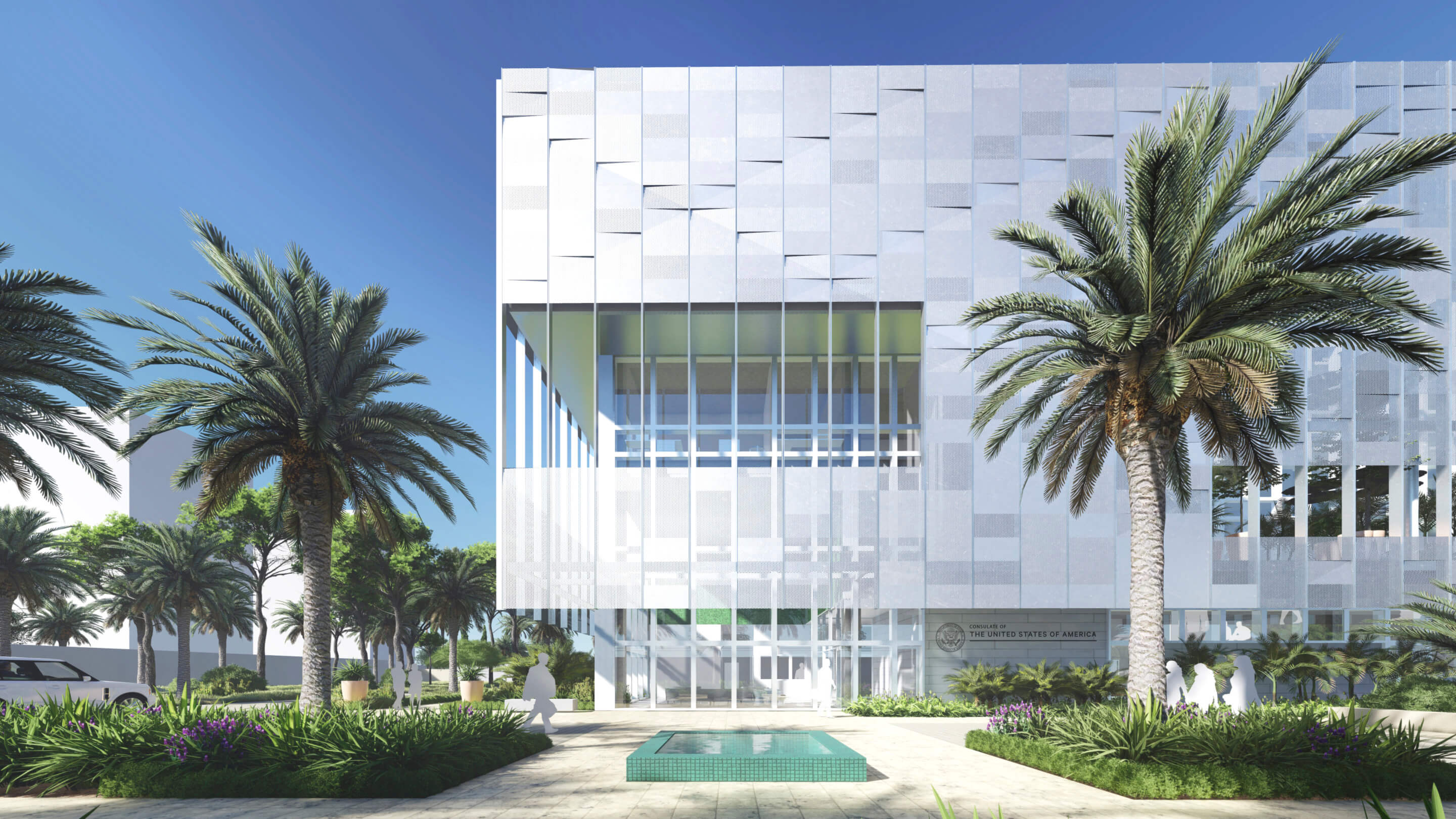
Most importantly, an embassy’s siting determines requirements for other, less easily hidden security measures, like Beirut’s high walls or the moats around the center-city locations of the London and Beijing embassies, the latter explained by SOM as a traditional Chinese garden feature. Almost all the new embassy designs feature louvered or screened facades, justified with recourse to sustainability (shading from solar gain), vernacular forms (textile patterns), and transparency (in contrast to the pointillist facades common among early-2000s designs). Of course, the old use of transparency as a metaphor for openness and freedom still persists in many locations, as in Miller Hull’s consulate in Mérida, Mexico, and the new London embassy, which is covered in translucent louvers over glass facades. However, in London, too, security overwhelms values: embassy workers can see out, while Londoners’ views into this extremely public site are occluded.
Pragmatism governs embassy design in other ways as well. The scope of the Port Moresby, Papua New Guinea, embassy was increased to add Marine barracks and classified facilities after hydrocarbon deposits were discovered nearby. And one of the major programmatic demands for embassy construction is for visa processing for aspiring visitors to the U.S.; embassies around the world have increased the numbers of service windows available and made accommodations for lines and separate offices just for this purpose. The new consulate in Hyderabad (Richärd Kennedy) will boast the space (and presumably the personnel) to process upwards of 2,500 applicants daily. Additionally, embassies host trade delegations, academic collaborations, parties for international bureaucrats, art exhibitions, and industrial showcase events. They must deal with large flows of people without compromising security.
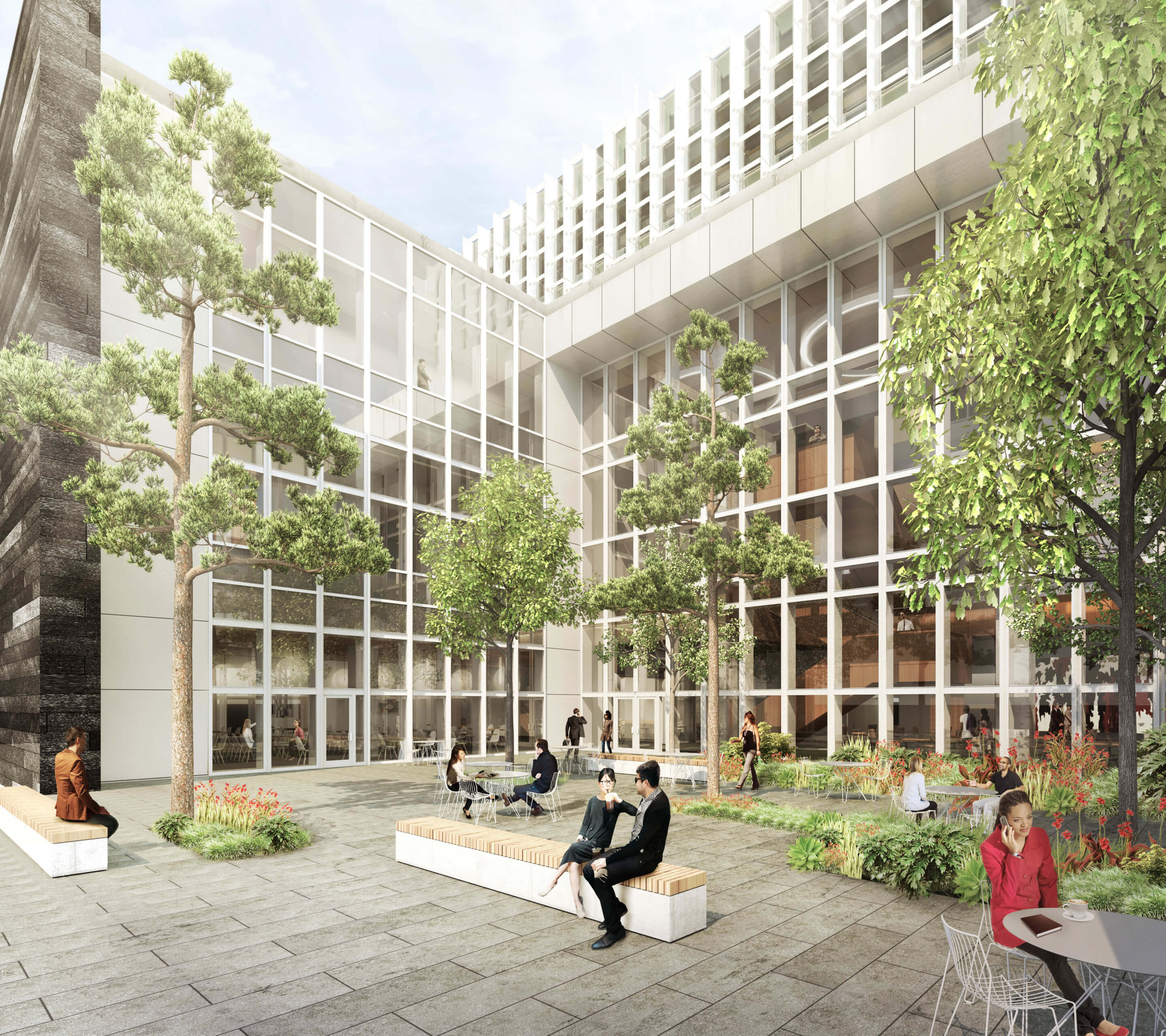
Perhaps more than anything else, the performance of diplomacy requires decorum and flexibility; stridently declared values can easily become liabilities with a change in geopolitical winds or in the course of an election—presidential terms are far shorter than the time lines of most embassy projects. Values baked into a building can become sore points with host governments, whereas high performance is unassailable. The architects of the new embassy in Guatemala City note that it “marks a $100 million investment in the economy of Guatemala” and forecast that its construction will create roughly 2,600 jobs. Who could have a problem with a building that does that?
And so rather than going out on a limb to present a coherent, inspirational symbolic vision of American values, the projects in OBO’s growing portfolio display a quiet diligence, pragmatism, and unobtrusiveness. None attempt to found a new metaphorical design vision for the country. Perhaps their diplomat clients prefer to let the private sector take up the mantle, substituting Coke products and superhero movies for the nebulous concept of transparent democracy. Or if they do harbor a desire to cultivate a quintessentially American virtue, then it is surely technocratic competence.
Architecture firms are seemingly undeterred by the absence of any symbolic afflatus and have come up with some compelling designs, even after accommodating OBO’s thick book of specifications that surely limited the designers’ formal and material options. The Mexico City embassy by Tod Williams Billie Tsien Architects and Davis Brody Bond renders the seemingly OBO-obligatory window screening into a geometric brass array of carefully calibrated apertures, an intentional ornament rather than the visual prophylactic typical of the genre. Warm sandstone welcomes rather than deters, and generous courtyards bring life deep into what could easily be a forbidding compound. Clearly, the architects wanted to make the building transcend its role as a node in the American diplomatic network to become its own nexus of inter-nation-state meaning. According to the project statement, “The design and materials will speak to the materials and architectural traditions of Mexico in ways that recognize a sense of this place and the long and interlocking histories of the American and Mexican peoples.”
Weiss/Manfredi makes a similar appeal to combining American vibes with local cultures at its embassy expansion in New Delhi. “Inspired by India’s enduring tradition of weaving together architecture and landscape, a series of cast stone screens, canopies, and garden walls introduce a resilient integrated design language that brings the campus into the twenty-first century,” the project statement reads. “The rejuvenated embassy compound expresses the symbolic values of American diplomacy through environmental stewardship and gives measure to America’s democratic presence in India.” Beyond what’s present in the words, the renderings of the project show a worthy extension of Stone’s chancery, continuing the high-modernist language existing on the campus and pulling in a nod to Le Corbusier’s formal plasticity at Chandigarh through large concrete pylons.
Other embassy designs make do to design for smaller diplomatic missions; renderings of Miller Hull’s Guatemala City effort show a well-proportioned glazed box wrapped in a modernist screen, while more critical regionalist efforts like Moore Ruble Yudell’s N’Djamena campus make judicious use of material and color. Ennead has envisioned a string of projecting boxes clad in screens in Nassau, Chiang Mai, Lagos, Ankara, and elsewhere, all of which deliver on the modernist legacy while implementing defensive security requirements with varying degrees of elegance. But the drive toward security can threaten to overwhelm other, larger efforts. The squiggly buildings Morphosis designed for Beirut attempt to pull visual focus away from a high perimeter wall.
In the end, given the inflexible design requirements, it’s a miracle that architects have been able to push embassy design so far beyond the embarrassing Bush-era defense contractor fortresses. OBO, too, is in a difficult position, given the logical incompatibility between democracy and a unified aesthetic representation of plural voices. Not to mention the alternation in American government, which produces wildly varying—one might say erratic—foreign policy. Perhaps security requirements are the only constant in all of America’s internal confusion, its cacophony of culture war and inequality—paranoid outgrowths for a country addicted to guns and policing. Or perhaps the difficulty in representing values stems from the unique position America finds itself in the first quarter of the 21st century (though probably not for long): a global hegemon no longer in need of selling itself or convincing others. Rather, embassies now need only assume the role of administrative offices processing visas and business agreements, the DMVs of a globalized world.










